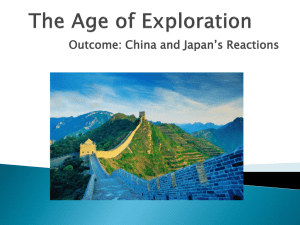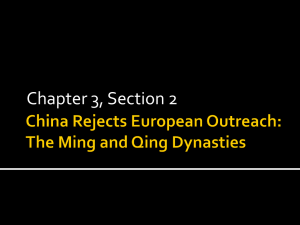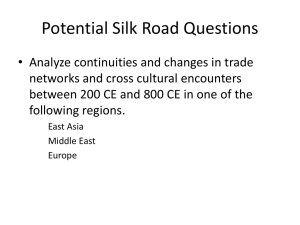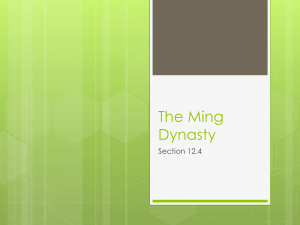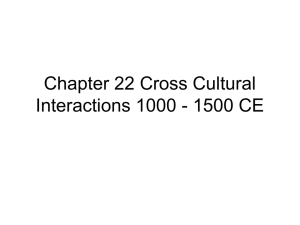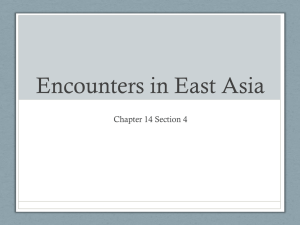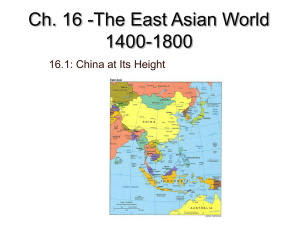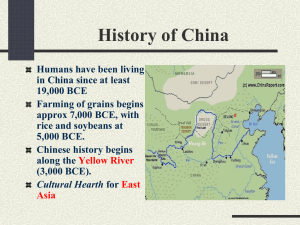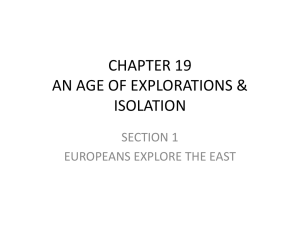Reaching Out: Cross-Cultural Interactions
advertisement
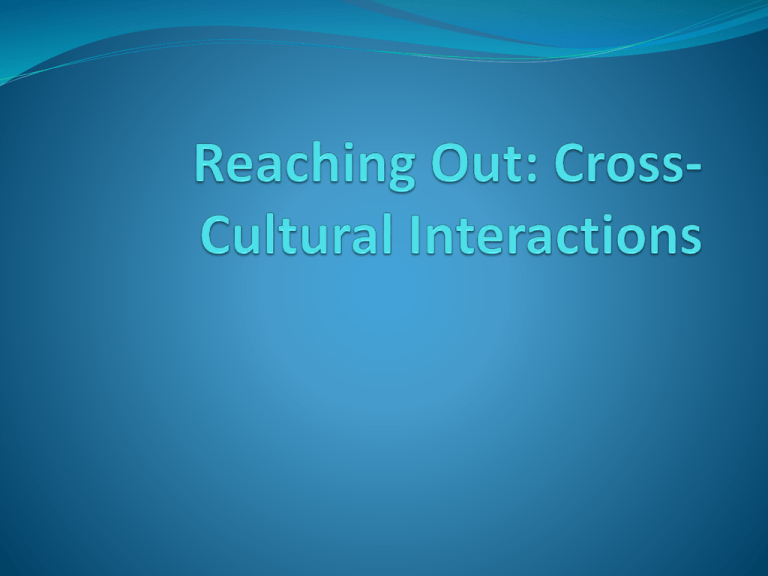
Long Distance Trade and Travel Traders in the Eurasian world used two primary routes for trade Silk Roads of central Asia Sea lanes of the Indian Ocean Greatest and most famous traveler of these Eurasian routes was Marco Polo Wrote extensively about his travels Long Distance Trade and Travel Political and Diplomatic travel Increasing importance of the Sharia cause diplomatic travel as Muslim intellectuals moved throughout subSaharan Africa, the Swahili states, and northern India. Ibn Battuta Great traveler of India, China, and Africa Long Distance Trade and Travel Mission Campaigns Sufi missionaries – Islamic Roman Catholic Missionaries Long Distance Trade and Travel Long Distance Travel and Cross Cultural Exchanges Chinese Magnetic Compass Chinese gunpowder technology Sugar-Cane Production in the Mediterranean Led to slave trade which in turn led to cross cultural exchanges Crisis and Recovery Cross cultural trade also led to the spread of pathogens Bubonic plague / Black Death Resulted in population decline, labor shortages, and peasant / worker rebellions. Destroyed many populations Death rate more than 70% in many areas Crisis and Recovery Recovery in China: The Ming Dynasty After the Mongols are devastated by the plague, power in China falls to a Buddhist named Hongwu. Proclaims the Ming Dynasty and sets out to eliminate Mongol influences in China. Reestablished the strong central government in China Economy and agriculture flourished under Ming rule. Recovery in Western Europe Europe’s recovery took the form of regional states rather than a centralized government. Problems of the Fourteenth Century increased with continual clashes between France and England in the Hundred Years War. Competition between European states became so intense that numerous small wars broke out which served to promote new military technologies. These innovations would serve the Europeans well as they launched their global explorations. Recovery in Western Europe: The Renaissance Renaissance – Cultural growth in Europe that drew inspiration from the Romans and Greeks. Growth in arts, architecture, scholarship, and literature, all of which led to more sophisticated lifestyles in the city. Key players Leonardo da Vinci Michelangelo Brunelleschi (architect) Humanists – Scholars and literary figures who studied philosophy, history, and literature in an attempt to simplify their writing styles from the convoluted efforts of medieval writers. Exploration and Colonization After recovering from the plague, China and Europe worked to reconnect with the rest of the world. The early Ming accommodated traders and for a brief period sponsored a series of voyages into the Indian Ocean. Meanwhile, European rulers began to sponsor voyages to the southern Atlantic as a route to the riches of Asia. By the end of the fifteenth century, Europeans had opened sea lanes to India and visited the Americas as well. The Chinese Reconnaissance of the Indian Ocean Ming Emperors refurbished the Song dynasty’s navies and allowed Chinese merchants to trade overseas once again. 1405 – First huge Chinese fleet sailed into the Indian Ocean under the leadership of Zheng He. Size of the fleets in the seven voyages he commanded in over 30 years were huge… Hundreds of vessels and tens of thousands of troops Just when China established its presence in the Indian Ocean, the Ming Emperors withdrew support for the endeavor. Put money toward agriculture and defense instead. European Exploration in the Atlantic and Indian Oceans Portuguese, under the leadership of Prince Henry the Navigator, were among the earliest European explorers sponsored by a state. Explored islands throughout the Atlantic Began to grow sugarcane on the islands of the Pacific which required large labor forces, which laid the foundations for the Atlantic Slave Trade in which over 20 million African slaves would be transported to America over the course of the next 400 years. European Exploration in the Atlantic and Indian Oceans Searching for Asia Other Europeans attempted to find an all water route to Asia to bypass the Italians and Muslims in the Mediterranean. Portuguese – Bartolomeu Dias sailed around the Cape of Good Hope in 1488 to find India. Vasco da Gama in 1498 reached Calicut in India. Spain – Christopher Columbus Reached America in 1492, thinking he had reached Asia.
